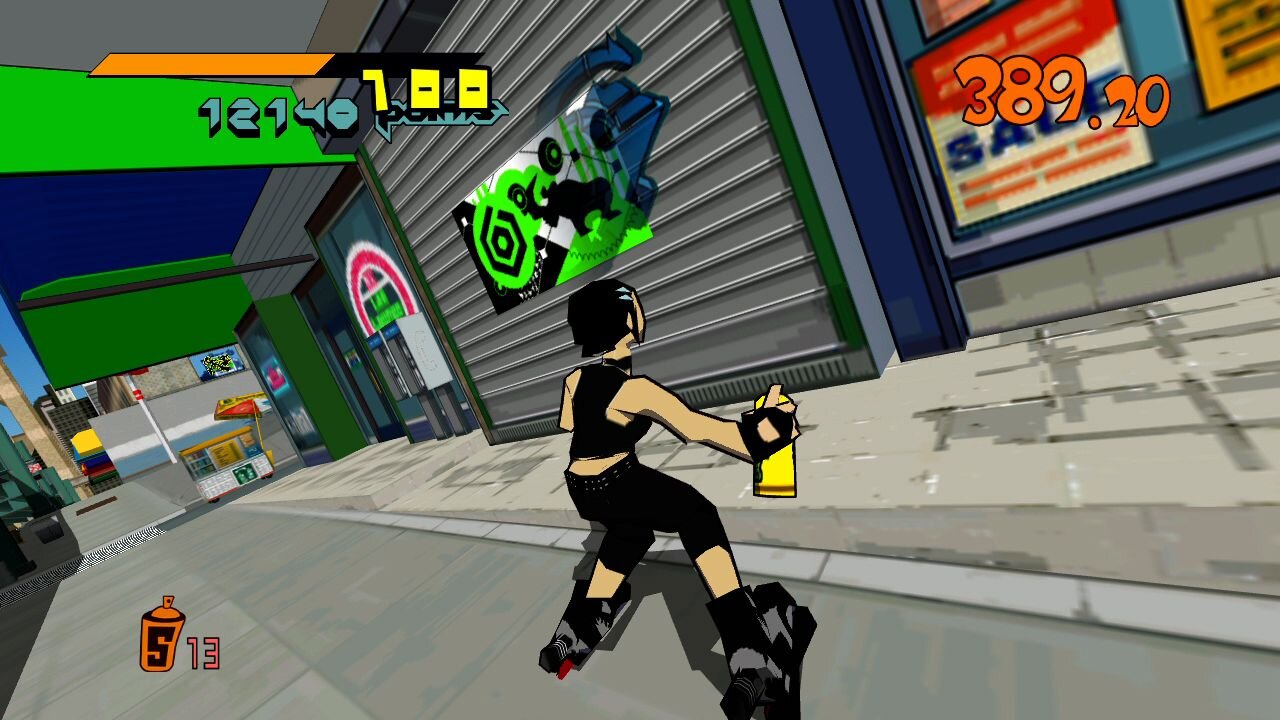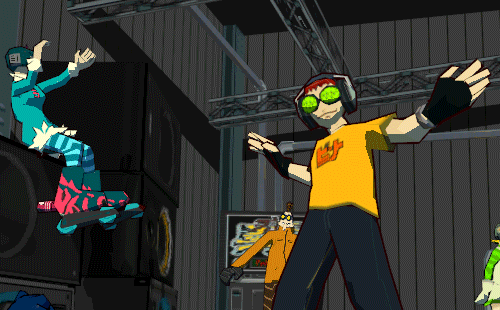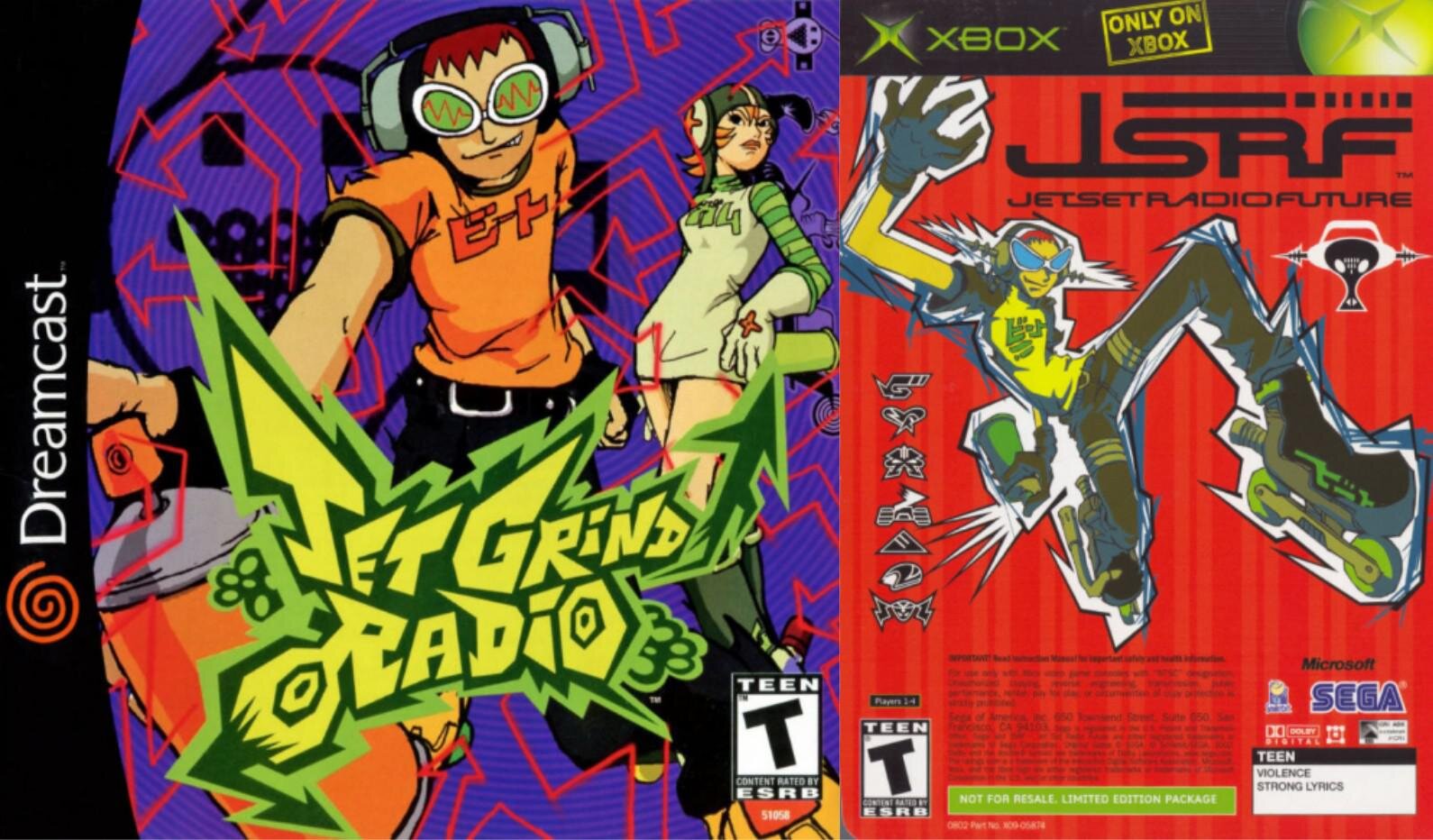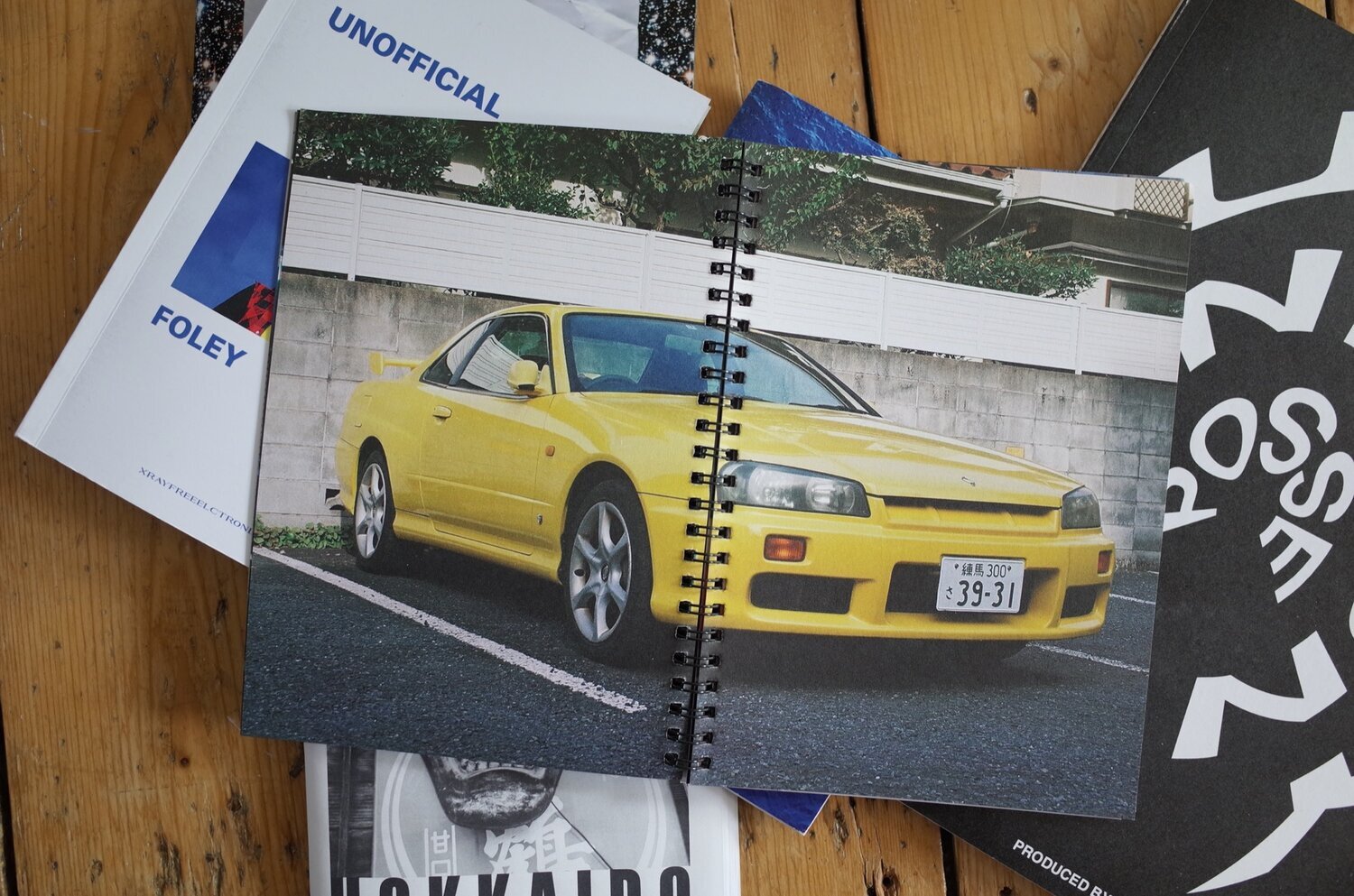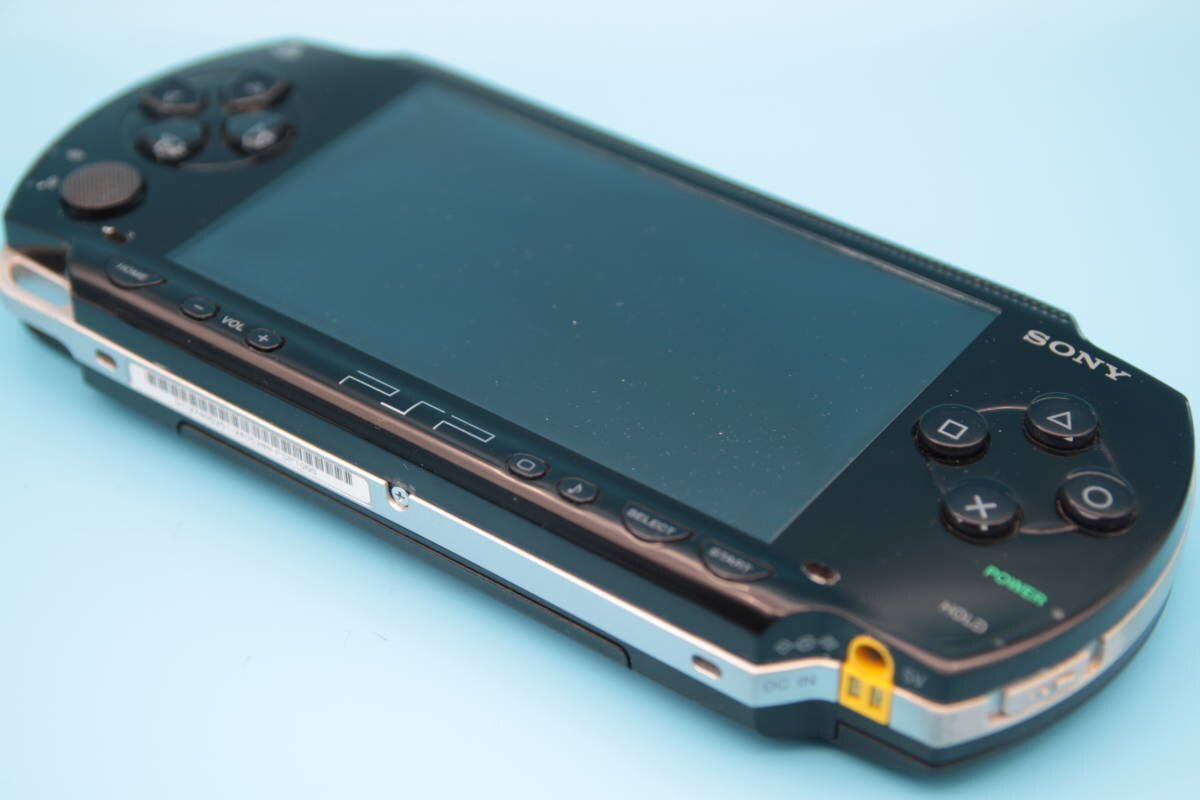Jet Set Radio: A Time Capsule of Late 90s Counter-Culture
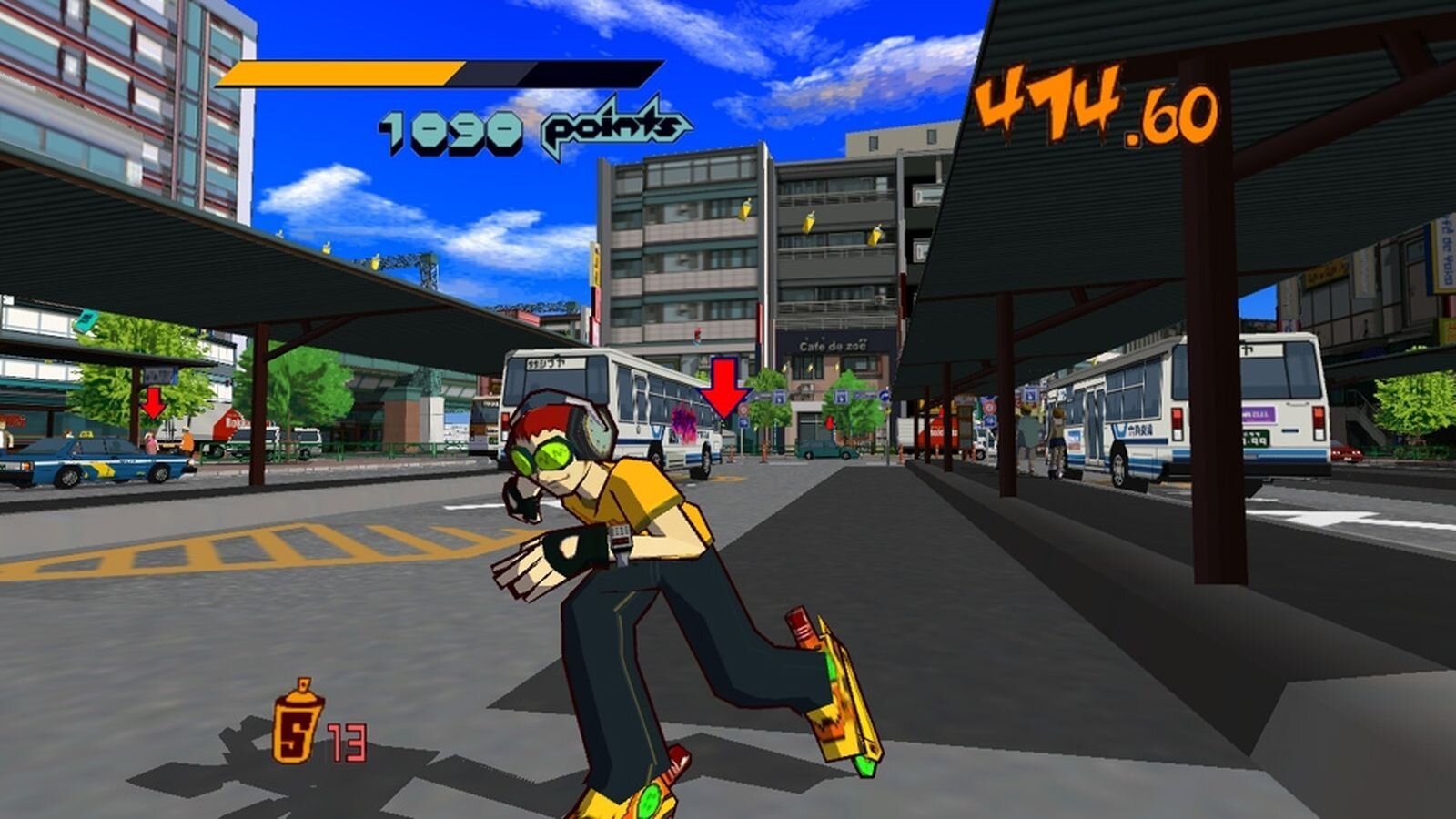
It’s midday, sometime in the early noughties.
I’m sat rewatching a VHS recording of Superman [1978] for the umpteenth time on my 14" CRT television - either Bush or Phillips; the details escape me. My siblings are dotted around our newly detached house. My little brother plays football in the garden, my sister doodles in the kitchen, while my older brother sits on the staircase playing Pokemon Blue on his Gameboy Colour. Each of us is two years apart from the other in age; the oldest - 9 or 10 - and the youngest [my sister] - 3 or 4.
It’s quaint, quiet in the house and since the proliferation of the internet hadn’t fully inhabited every morsel of daily life, as it does now, we were markedly unoccupied.
My parents have recently acquired their first-ever set of mobile phones - a duo of Nokias [the old, brick kind] - with which they struggle to understand fully. It makes calls, and you can play Snake on it - that’s enough. Life is simple and besides Gameboys, my friend’s PS1, some “educational” PC games and my parent’s first foray into monochrome mobile technology, videogames were generally seen as an extreme luxury, a time-waster and a pointless medium. Which is what makes what happened next so incredible.
Nokia 1100 [2003]
My parents, after grappling with their newfound mobile extensions, bring my siblings and me into the living room. I’m not entirely sure if my sister was present at the time. She was very young and mostly filled her time drenching Magic Painting Books [the ones where you just add water and brush].
Unsure as to what we were to be lectured about this time, we sat silently. Whether it was about our endlessly messy rooms, our aversion to all things homework or perhaps that our mother was expecting a child. It wouldn’t be the first time. Instead, they begin telling us about their new Nokias; spouting details of their first mobile phone contract. Details of which were entirely lost on kids as young as us. Yet there was one, or more precisely, two aspects of their newly leased contract which we were indeed enthusiastic about. Two inclusions to their contract which helped cement their decision to purchase the fancy new phones and provided me and my siblings with our first dive into an avenue of entertainment which we would consume forever.
Two Sega Dreamcasts, with a bundle of games to boot. Two visibility identical, matte grey consoles with a pair of controllers each, all counted as part of my parents new deal with Vodafone. What a fucking steal!
It’s safe to say, we were ecstatic. No longer would we have to reside console gaming as a benefit of playdates and sleepovers. No longer would we be in the rising minority of families without a home video game console. And while it may not be the edgy Playstation 2, or the iconic Nintendo 64 [both of which would come later], it was the Dreamcast. Sega’s final home console, released in 1999 and lauded by video game magazine, Next Generation [NextGen], as “the most powerful system available [at the time], showcasing the best graphics at a reasonable price”. And we had two of them.
After briskly connecting the first of the Dreamcasts to the CRT TV and leaving the other aside in case the first one broke, we began to roll out the 4 games that came with the deluge of gaming tech. Starting things off with the first in the rapidly declining line of 3D Sonic games, Sonic Adventure: a game that, while plagued with clunky mechanics and a heinous amount of overlapping dialogue, remains a staple of my early gaming experience.
Sonic Adventure [1998]
The next was Virtua Tennis, a sports simulator and the first in a long line of multiplayer games to spur our inherent sibling rivalries. The third title remains unknown to me: some fighting game that my parents decided was too mature for our infant minds. The fourth, however, just made the cut. A PEGI 12 rated title which, by all accounts, was deemed harmless enough to allow us some jurisdiction over its playability. Naturally, if we could watch a 12 rated movie then we should be able to play a 12 rated game. Little did we know quite how significant that game would be to us and the world of gaming as a whole.
So, we booted it up, glossed through the typical production logos, the Dreamcast’s iconic blue swirl and landed on a vibe as cool as they come. An edgy, urban, graffiti logo - exploding with vibrant greens and yellows - accompanied by the funkiest turntable beats my prepubescent ass had ever heard. This was Jet Set Radio.
Published in 2000 exclusively for the Sega Dreamcast, Jet Set Radio is, strictly speaking, an action game developed by Smilebit as a follow up to their 1999 arcade gem, Sega Rally 2. Dropping players in the heart of Tokyo-to and into the soles of neon roller blades [inline skates] the game follows a gang of inline skaters known as the GGs as they burn through the city, spraying graffiti and causing havoc for the local police force.
Oozing style, attitude and vision, the game offered players the opportunity to experience, first-hand, the anti-establishment notions of mid-to-late 90s/early 00s pop culture. It encouraged anarchy, celebrated individuality, informed creativity and, most importantly, was cool as fuck.
With an anime-esque art style which Brandon Justice of IGN lauded “looks like a moving cartoon, [with] every character, right down to the police dogs, [...] practically overflowing with personality”, Jet Set Radio soon became an innovative, cult icon of postmodern street style and a staple of the short-lived Sega Dreamcast. Sporting one of the first uses of cel-shaded graphics in gaming, Smilebit had seemingly struck gold with their sophomore title, pulling in near-unanimous praise for the game’s bold direction, it’s tenacious visual style and it’s popping soundtrack to boot. Enjoying a slew of hard-hitting beats by Hideki Naganuma [with additional tracks by Richard Jacques, Deavid Soul, Toronto, and B.B. Rights if you owned the International version], that both propelled the story and finessed the game’s vivid setting, Jet Set Radio was considered by critics at the time as “groundbreaking”, “timeless” and “something entirely original”. Just listen to the menu music. This ain’t no nostalgia: that bassline slaps.
Consisting of various locations, each inspired by Tokyo shopping districts in Shibuya and Shinjuku, the game was split up into three level types: Street, Rival Showdown, and Trial. The first and most free-flowing of the level types set players to traverse an area, spraying as many walls and objects that they could with the GG’s brand colours. This was the most liberating of level types and arguably the most polished of the three; being let loose upon an urban playground to spray and grind to my heart’s content was always the best part of unlocking a new area. The latter types sadly fail to keep up the momentum of the first, forcing players to prioritise precision over freedom in a control system which, at the time, lacked the camera movement of later games consoles [the Dreamcast’s controller only had one control stick].
The second level type was a showdown with rival gang members - a boss battle of sorts - in which players were pitted to chase the enemy skaters and spray paint them accordingly. This was generally the more difficult of the level types due to the aforementioned lack of control but it usually resulted in the player unlocking a new playable character.
Finally, the third encouraged players to spray, jump and skate their way towards varying goals under a strict time limit. Essentially a time trial, which again somewhat falters due to the game’s underdeveloped control system.
Jet Set Radio
Yet, while somewhat undercooked in gameplay, each of these level types, along with the game’s graphic art style and charmingly accentuated personality, duly culminate in a dynamic fusion of Tony Hawks style agency and the cartoonish mode of Crazy Taxi; offering a fresh, youthful take on the traditional skate genre and inspiring a slew of budding game developers accordingly. President and founder of Insomniac Games, Ted Price spoke openly in an interview with Eurogamer about how Jet Set Radio inspired the traversal of their futuristic action-adventure, Sunset Overdrive. A game which had players zip-lining, wall-running and grinding their way to victory in a capacity not too dissimilar from Smilebit’s original effort.
Sunset Overdive
“Jet Set Radio [...] in particular [was] influential when we began experimenting with our traversal [for Sunset Overdrive]l. During pre-production we had a strong desire to move away from a traditional shooter mechanic. We’ve all been playing games for years where we’ve hidden behind cover and then kind of scuttled to the next concrete barrier. We wanted to change that up. And Jet Set Radio and Tony Hawk came up, because [...] One of our designers, Cameron Christian, is a fan of Jet Set Radio. This idea of grinding on rails and grinding on wires and bouncing on cars started gaining traction at the studio.”
The game appears on the surface as just another skate game with a vibrant coat of paint and some funky costumes, but when you delve a little deeper, the inspirations are clear. DJ Professor K, the game’s narrator and frequent aid to the GGs looks to be an amalgamation of the D.J. from Walter Hill’s cult hit, The Warriors and Samuel Jackson’s Mister Señor Love Daddy of Spike Lee’s politically-driven Do The Right Thing. The fictional curator of the game’s incredible soundtrack and the voice of most of the game’s story, K exudes charisma at every turn, establishing the game’s non-conformist agenda and adding a layer of authenticity to its in-game pirate radio.
DJ Professor K
This nonconformity is further developed with regards to its characters, taking the counter-cultural qualities of David Fincher’s Fight Club and giving them a fluorescent makeover. Each gang has its own unique fashion sense and set of beliefs which duly translated into their skating. There were the Noise Tanks who looked like a cross between Robocop and the Mutant gang from Frank Miller’s The Dark Knight Returns; Poison Jam, a Godzilla-themed group of horror movie fanatics; and the Love Shockers: a pent-up army of eye-patch sporting women described by DJ Professor K as “broken hearted ladies out for vengeance”. With its unique gameplay, comic book flair and diverse array of characters Jet Set Radio felt uniform in its countercultural efforts. Even the central GGs, a misfit gang of trailblazers and lone wolves, felt like a forebear to the hipster generation and a perfect encapsulation of the game’s central themes of individuality and freedom of expression.
The quintessential game of the Y2K generation, with raucous beats, boisterous streets and a true sense of reckless abandon, Jet Set Radio gave gamers a chance to break away from the banality of everyday life and prove their worth on the rails and the neon-soaked walls of Tokyo-to. At the time I played it, it proved all this to me and more, affirming that video games had the capability of being a medium of true creative expression and exposing the now generally accepted notion that they were fucking cool.
It also encouraged me to take up rollerblading, which, to my dismay, is an activity I’ve failed to keep up. Though, I did skate backwards once. And I’ve got Jet Set Radio to thank for that.
North American box art: Jet Set Radio / Jet Set Radio Future
While sporting a well-received sequel game released for the Xbox in 2002, and a lacklustre HD remaster in 2012, Jet Set Radio is a game entirely of its time. A unique entity in the overall spectrum of gaming and a cultural apogee of late 90s street style and millennial angst. And with the news of a spiritual successor in the works, featuring added rail-grinding, tagging, cel-shaded graphics and even musical input from Hideki Naganuma; let’s hope Team Reptile has what it takes to bring life back to the skates in the aptly titled, Bomb Rush Cyberfunk.
In the words of DJ Professor K: “Over the ‘hood, through the streets and right into your brain”. This is Jet Set Radio!
About The Author
Simon Jenner explores meaningful storytelling through film and media, occasionally producing a little writing along the way.

![Nokia 1100 [2003]](https://images.squarespace-cdn.com/content/v1/57825361440243db4a4b7830/1614814706993-XW6A550E6V9WSR6Z7EYI/Jet-set-radio-anime-music-90s-ps1-counterculture-simonjenner-nokia-sabukaru-online-magazine-tokyo13.png)

![Sonic Adventure [1998]](https://images.squarespace-cdn.com/content/v1/57825361440243db4a4b7830/1614814762177-QUV1ZE0CSVEE51G0JPOI/Jet-set-radio-anime-music-90s-ps1-counterculture-simonjenner-nokia-sabukaru-online-magazine-tokyo14.jpg)

![DC-UK - Issue 16 [2000-12][Future Publishing][GB]](https://images.squarespace-cdn.com/content/v1/57825361440243db4a4b7830/1614814806115-T81KH4V6US0AD9VT7WR1/Jet-set-radio-anime-music-90s-ps1-counterculture-simonjenner-nokia-sabukaru-online-magazine-tokyo5.png)


